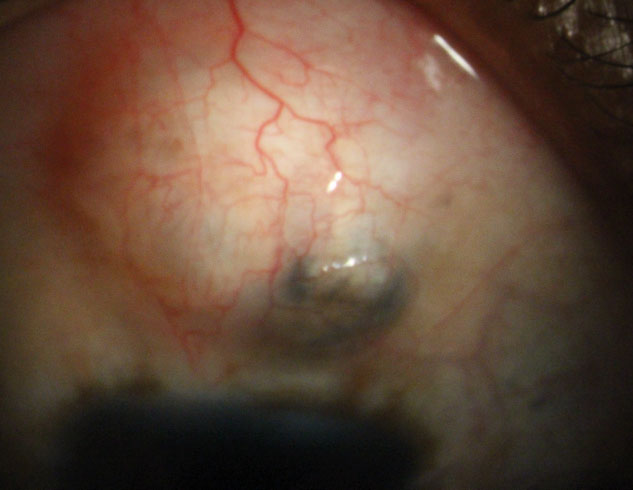 |
| When determining an initial treatment for advanced glaucoma, trabeculectomy and medical therapy have similar safety profiles. In terms of efficacy at five years, however, the former intervention results in better disease outcomes, study finds. Photo: Justin Schweitzer, OD. Click image to enlarge. |
Given that glaucoma is symptomatic in its early phases, it is not uncommon for patients to present with advanced disease, the main risk factor for progression to blindness. A recent randomized controlled trial, called Treatment of Advanced Glaucoma Study (TAGS), investigated which primary intervention is more effective for this patient population: trabeculectomy or IOP lowering drops. The five-year results, published earlier this week in Ophthalmology, concluded that while the two initial treatments had a similar safety profile, trabeculectomy demonstrated superiority over drops in terms of IOP-lowering ability and prevention of disease progression.
The study included 453 adults from 27 secondary care glaucoma departments in the UK who presented with newly diagnosed advanced open-angle glaucoma in at least one eye (average age at dx: 67 years). Participants were randomized 1:1 to be treated with either mitomycin C augmented trabeculectomy or IOP-lowering drops and were followed for up to five years. The primary outcome of the study was vision-specific quality of life measured with Visual Function Questionnaire-25 (VFQ-25).
The data showed that at five years, the mean VFQ-25 in the trabeculectomy and medication arms were 83.3 and 81.3, and mean IOPs were 12.07mm Hg and 14.76mm Hg, respectively. Glaucoma severity (measured with visual field mean deviation) was -14.30 dB in the trab arm and -16.74 dB in the medication arm. Fewer patients in the trabeculectomy arm required topical therapy at five years (35.4% vs. 72.5% of the medication arm).
While serious adverse events were rare among both groups, safety events occurred in 52.2% of the trab arm and 57.9% of the medication arm, which included mild/moderate adverse events such as hypotony or early bleb leak and unrelated medical events such as illness or death.
To summarize, the five-year results of TAGS can be broken down into four main findings:
- Initial surgery was associated with less disease progression compared with medical treatment.
- There was no significant difference in the primary outcome measure vision-related QoL between treatment arms.
- Primary trabeculectomy was more effective than medical therapy in lowering IOP and led to significantly less drop use.
- Adverse events were similar between the two primary treatments.
Based on these positive results, the researchers concluded in their paper, “Trabeculectomy should be offered as a primary intervention in patients presenting with advanced glaucoma.”
King AJ, Hudson J, Azuara-Blanco A, et al. Evaluating primary treatment for people presenting with advanced glaucoma: 5-year results of the Treatment of Advanced Glaucoma Study. Ophthalmology. January 8, 2024. [Epub ahead of print]. |

